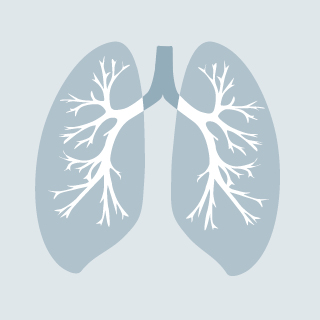
Lungs are complex organs with considerable surface area. Spread out, they would cover an area the size of a tennis court. They also have some remarkable features.
Our airways have a very good filter – the self-cleaning mechanism: Large particles of dirt get stuck in the nose and are blown out. All our airways have mucous membranes and fine hairs called cilia. In healthy people, foreign bodies like viruses and bacteria stick to the mucous membranes. The beating motion of the cilia transports foreign bodies towards the throat. If the foreign bodies are very small and reach the smallest branches of the lungs (the alveoli) the lungs are cleaned with the aid of macrophages. Macrophages are part of our immune system and are also called scavenger cells or phagocytes. Foreign bodies and pathogens are detected, engulfed, broken down by enzymes and rendered harmless.
In the winter, for example, when central heating is turned up full blast, the mucous membranes can dry out. This impairs the natural self-cleaning mechanism of our airways. If the protective moisture film is missing, we can catch a cold because viruses and bacteria can reach the mucosal cells more easily. This is why it is advisable to nebulise an isotonic saline solution to prevent colds (link to inhalation solutions). This re-moistens the airways, helping to remove pathogens; it can also have a positive impact during pollen season. But too much mucus is also a problem. The fine hairs then cannot remove viruses and bacteria as effectively. In this case, nebulising hypertonic saline solutions can help to liquefy the mucus. This also supports the lung’s natural cleaning mechanism.
To allow the isotonic or hypertonic saline solution or medication mixture to have the desired effect, a PARI nebuliser produces very fine droplets. This aerosol, as it is called, is directly absorbed via the mucous membranes. Whether the aerosol acts in the nose, the sinuses or the lungs depends on, among other factors, its size. Larger droplets only get to the upper airways (the mouth, throat, the larynx or the nasal region). Smaller and finer droplets on the other hand, can get deep into your lungs.
The nebuliser chamber is what actually generates the aerosol, so it is the most vital component of the entire nebuliser system. To ensure that the aerosol has the optimum effect at a certain site, such as the sinuses or the lungs, a specific aerosol has to be generated. The nebulisers from the PARI LC SPRINT family are fitted with nozzle attachments in a range of colours. Each colour generates a different droplet size adjusted to the age group or the clinical condition.
The following nozzle attachments are available:
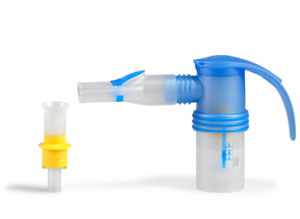
Yellow nozzle attachment
The yellow nozzle attachment delivers an especially fine aerosol for the small airways and for the treatment of babies and children.
This nebuliser:
PARI LC SPRINT Junior Nebuliser
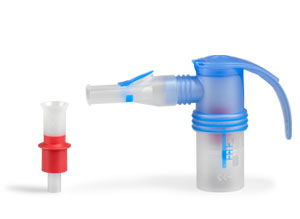
Red nozzle attachment
Extra-fine droplets specifically for babies and young children(supplied with the PARI LC SPRINT BABY) and also for the peripheral areas of the lungs (supplied with the PARI LC SPRINT STAR)
This nebuliser:
PARI LC SPRINT BABY Nebuliser and PARI LC SPRINT STAR Nebuliser.
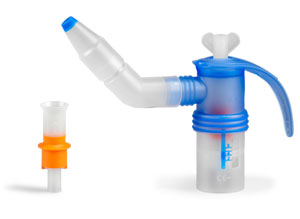
Orange nozzle attachment
In combination with a pulsing feature, the orange nozzle attachment delivers an ideal aerosol spectrum for efficient deposition in the sinuses.
This nebuliser:
PARI LC SPRINT SINUS Nebuliser
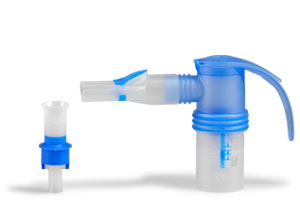
Blue nozzle attachment
The blue nozzle attachment delivers droplets for efficient deposition in the central region of the lungs in older children and adults.
This nebuliser:
PARI LC SPRINT Nebuliser
Contact us
Any questions? You can reach us at this number:
01932 341122
© 2024 PARI GmbH Spezialisten für effektive Inhalation